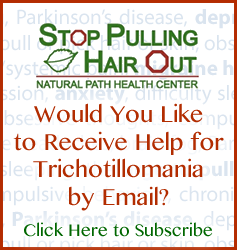 The first part of this series addressed some of the possible reasons why there has been little research conducted on effective treatments for trichotillomania. In spite of having little research available, we have found that neurotransmitter imbalance is one of the major causes for the intense urge to pull, pick or bite that is experienced by those with trichotillomania. So why isn’t there more published research on using amino acid therapy in regards to trich?
The first part of this series addressed some of the possible reasons why there has been little research conducted on effective treatments for trichotillomania. In spite of having little research available, we have found that neurotransmitter imbalance is one of the major causes for the intense urge to pull, pick or bite that is experienced by those with trichotillomania. So why isn’t there more published research on using amino acid therapy in regards to trich?
I believe that in order to find the answer to this question, you have to (again) follow the money. For better or for worse, money drives most research efforts in today’s world. However, nobody owns a monopoly over the use of amino acids and therefore, no single group or corporation stands to significantly benefit from the outcome of research on amino acid therapy in regards to trichotillomania.
However, this doesn’t mean that research hasn’t been done. True, there are few if any double-blind, placebo controlled clinical trials involving people that have trichotillomania taking a set dose of amino acids. Based on our clinical knowledge, this research would be destined to fail anyway, as we have found that each individual requires a unique blend of amino acids to properly address their unique needs. However, there has been research into the mechanism of action of amino acid therapy in regards to neurotransmitter function as well as published peer-reviewed papers which can be used to drive clinical decisions.
Much of this research has been authored or co-authored by Marty Hinz, MD; a summary of these research findings can be found here. Combining this research with clinical experience has led us to believe that neurotransmitter imbalance is the major underlying cause of the urge to pull, pick or bite experienced by those with trichotillomania. Why? Because we have seen the urge resolve completely in hundreds of people that have reestablished proper neurotransmitter function using amino acid therapy.
It can be incredibly frustrating for those that suffer from trich to have so little information available to them. It’s frustrating as a clinician as well. However, I am hopeful that in the near future, controlled clinical trials will be conducted on people with trichotillomania using amino acid therapy. Until that day comes, however, we will continue to use what works and help people eliminate the urge to pull using amino acid therapy as an integrated part of a well-rounded plan to help address each individual’s specific needs and triggers.

